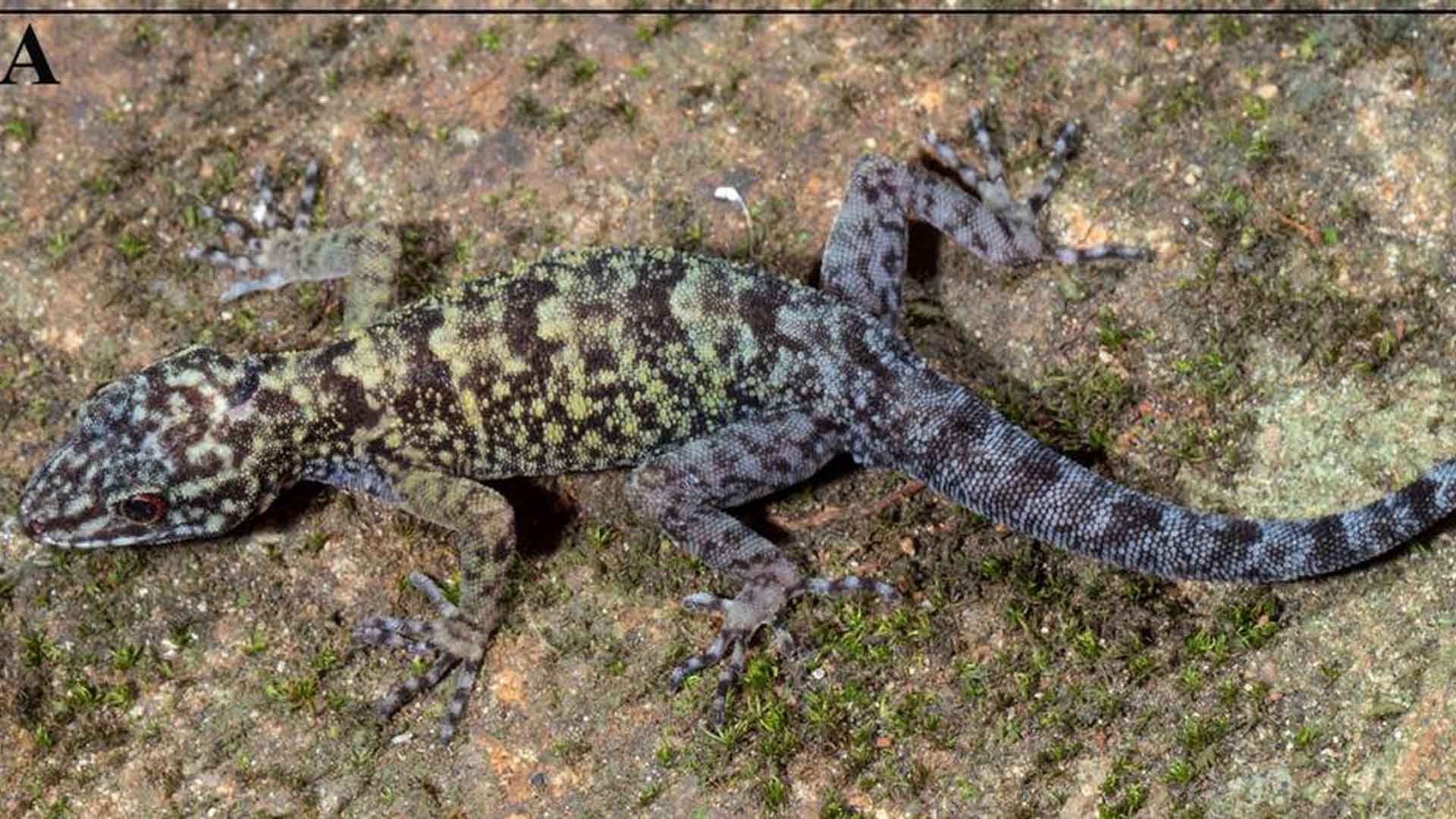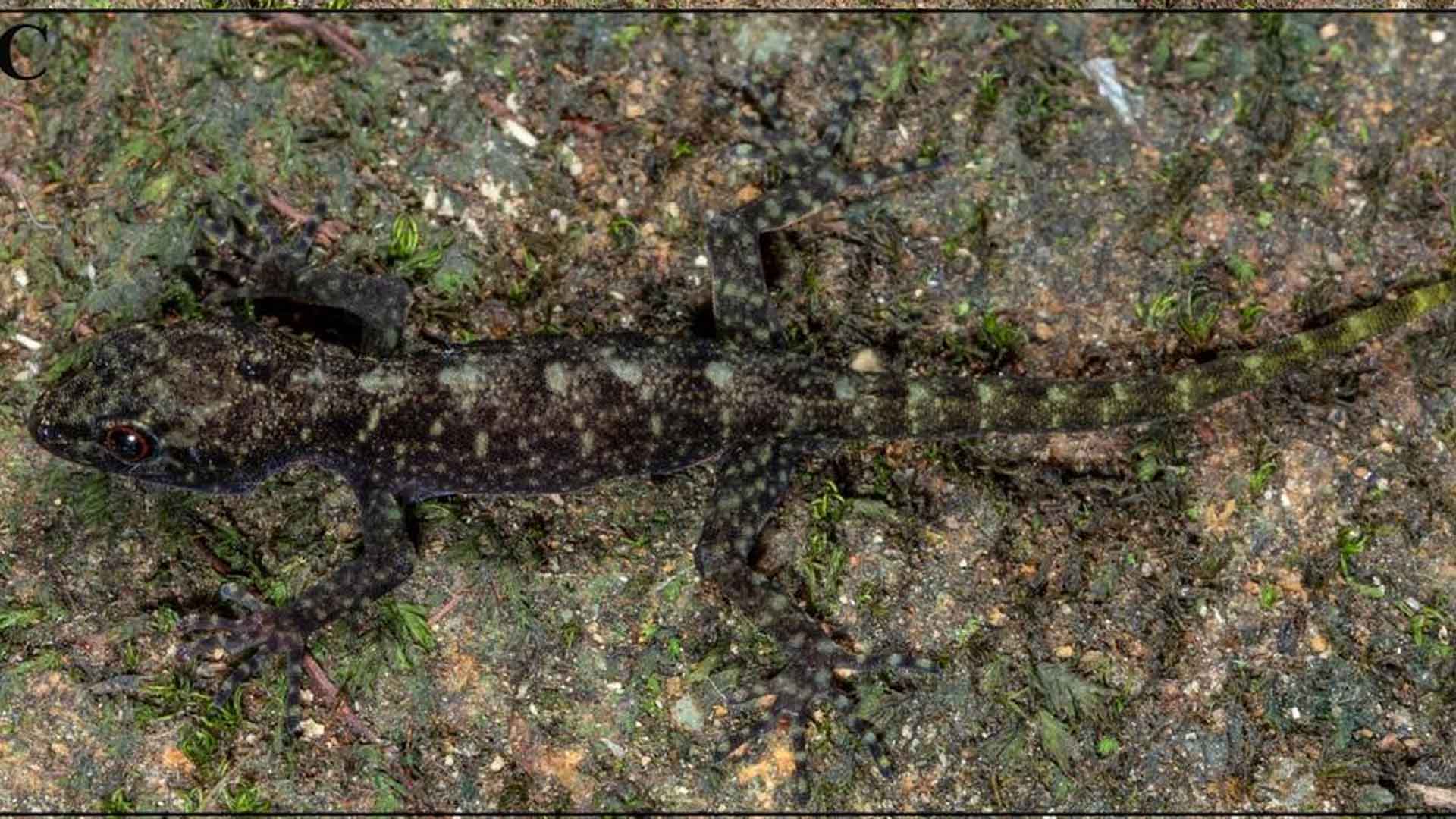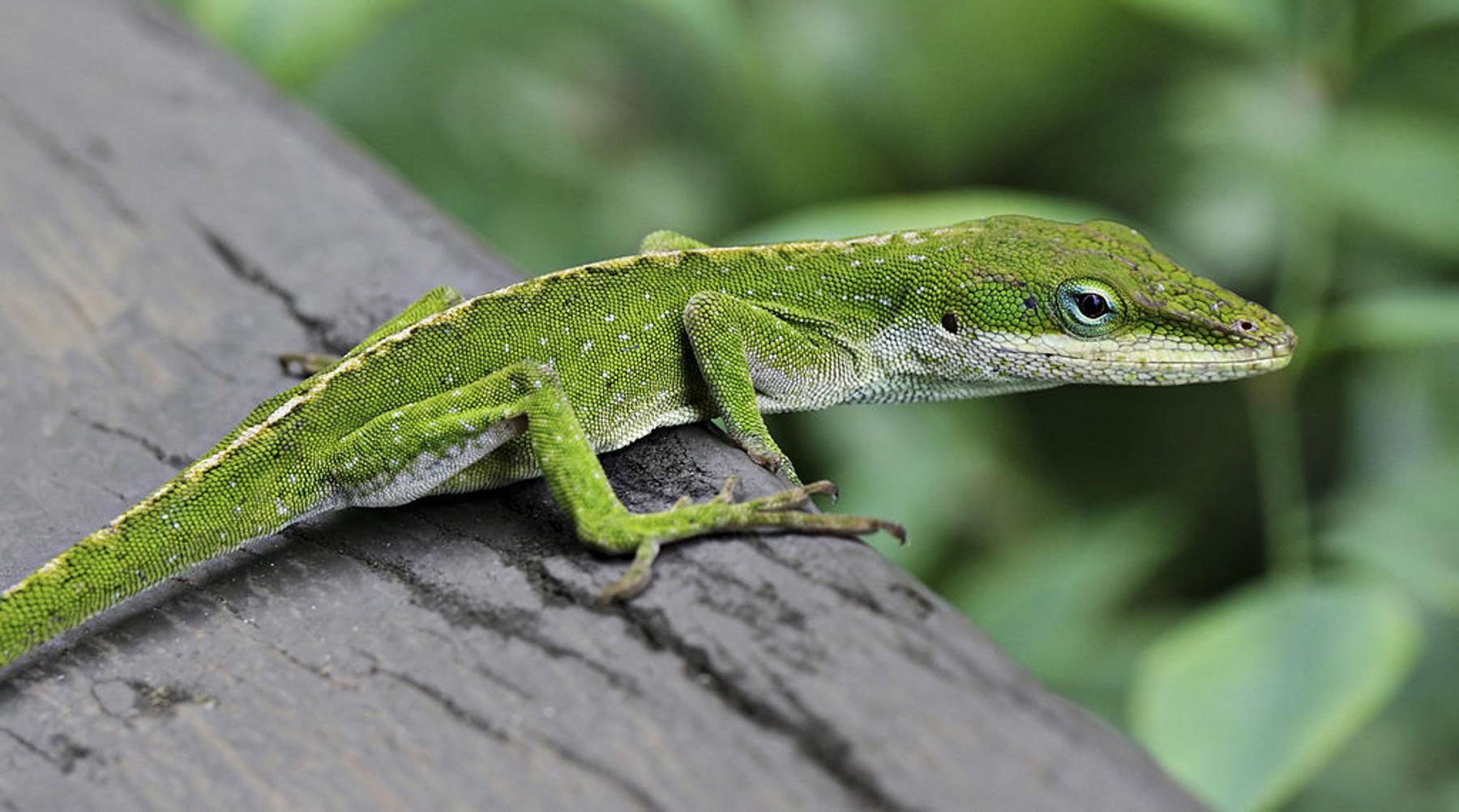New Species Discovered with ‘Long’ Fingers and ‘Strong’ Claws
In 2022, scientists exploring a cave in Tamil Nadu, southern India, stumbled upon a unique creature gripping the rock wall. What was a “dwarf”-like gecko, with its “long” fingers and “strong” claws, actually turned out to be a new species.
Dubbed Cnemaspis anuradhae or Anuradha’s dwarf gecko, this discovery was recently published in the journal Zootaxa.
Physical Traits of Anuradha’s Dwarf Gecko
Anuradha’s dwarf gecko is medium-sized, measuring just over 4 inches. It has a slender body covered in spikes, long fingers with strong claws, and small reddish eyes with a light orange ring.

Source: Pallava Bagla/Corbis via Getty Images; Akshay Khandekar via Khandekar, Thackeray and Agarwal
These distinctive traits set it apart from other gecko species, making it a fascinating find for researchers.
Colorful Males
Male Anuradha’s dwarf geckos are particularly striking with their vibrant rainbow coloring. Their bodies shift from pale blue to yellow, light green, blue, and finally purple, adorned with dark brown blotches.

Source: Pallava Bagla/Corbis via Getty Images; Akshay Khandekar via Khandekar, Thackeray and Agarwal
This colorful appearance not only makes them visually appealing but also helps in their identification.
Subtle Females and Juveniles
In contrast, female Anuradha’s dwarf geckos have a muted cream coloring with slight rainbow hues on their sides. Juveniles look significantly different, with their bodies primarily dark brown with lighter brown blotches.

Source: Pallava Bagla/Corbis via Getty Images; Akshay Khandekar via Khandekar, Thackeray and Agarwal
These variations in color help researchers distinguish between the different stages and sexes of the species.
Habitat in Evergreen Forests
These geckos were found in evergreen forests at elevations between 4,600 and 5,600 feet in Tamil Nadu’s Dindigul District.

Source: Pallava Bagla/Corbis via Getty Images; Akshay Khandekar via Khandekar, Thackeray and Agarwal
They were observed perched on rocks, inside a cave, and within a culvert. This specific habitat range provides insights into their ecological preferences and behavior.
Importance of the Discovery
The discovery of Anuradha’s dwarf gecko is significant as it highlights the rich biodiversity of Tamil Nadu.

Source: Wikimedia
It also emphasizes the importance of ongoing scientific exploration and conservation efforts in the region to protect and understand these unique species.
DNA Analysis and Genetic Divergence
Researchers identified the new species through its unique physical features and DNA analysis. The genetic study revealed that Anuradha’s dwarf gecko had at least 8% genetic divergence from other dwarf geckos, confirming it as a distinct species.

Source: Freepik
This genetic information is crucial for understanding the evolutionary relationships among geckos.
Tribute to Anuradha Batabyal
The new species was named in honor of Anuradha Batabyal, a scientist known for her work on the behavioral ecology, color physiology, and cognition of Indian lizards.

Source: Wikipedia
Her contributions and support were instrumental in the research, making the naming a fitting tribute.
Other New Species by the Team
Alongside Anuradha’s dwarf gecko, the research team discovered four more new species: Agamalai dwarf gecko, Anaimalai dwarf gecko, Tenkasi dwarf gecko, and Valparai dwarf gecko.

Source: Freepik
These discoveries further showcase the diverse and rich lizard fauna of Tamil Nadu.
Recent Discoveries in Herpetology
In the past few years, several new species of reptiles have been discovered worldwide.

Source: Wikimedia
For instance, in 2012, scientists in Madagascar found a new chameleon species, Brookesia nana, considered the world’s smallest reptile.
Uncovering Hidden Biodiversity
Each new species discovered adds to our understanding of the world’s biodiversity.

Source: Freepik
These findings help scientists learn more about evolutionary processes, ecological interactions, and the importance of preserving habitats. They also inspire further research and exploration.
The Future of Wildlife Research
The discovery of Anuradha’s dwarf gecko and other new species demonstrates the potential for more groundbreaking findings in the future.

Source: Freepik
Continued support for scientific research and conservation is essential to uncovering and protecting the planet’s hidden living treasures.
